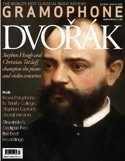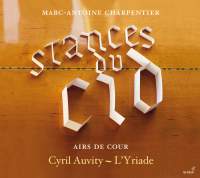Texte paru dans: / Appeared in: |
|
|
Outil de traduction (Très approximatif) |
|
|
Reviewer: David Vickers
This collection revolves around a range of seldom performed songs by Charpentier. The title alludes to three stanzas on texts taken from Pierre Corneille’s play Le Cid (1637), each one printed separately in the Mercure Galant between January and March 1681. They are in their order of publication, and Cyril Auvity’s ardent characterisation conveys a beleaguered lover’s anguish in ‘Percé jusque au fond du coeur’; the imagery of battles and enraged sentiment in ‘Que je sens de rudes combats’ features vivid continuo playing, and the third song, ‘Pére, maîtresse, honneur, amour’, fluctuates potently between melancholy and bitterness. Nine more Charpentier miniatures are performed delightfully, with Auvity’s flexible mastery of florid details and poetic declamation adept throughout shifting contrasts between soft seductiveness (‘Ruisseau qui nourrit dans ce bois’) and indignant complaints (‘Non, non je ne l’aime plus’).
Some
accompaniments are richly textured by L’Yriade’s two violins, cello, theorbo and
harpsichord, all of whom create sensitive textures and sensual rhythms as the
music demands; the impassioned violins milk every drop of dissonant tension in
‘Tombeau de Mademoiselle’ by Jacques Morel (a pupil of Marais), whereas they
play elegantly in two popular songs by Michel Lambert (Lully’s father-in-law),
including the ironic ‘Ma bergère est tendre et fidèle’ and the ubiquitous ‘Vos
mépris chaque jour’. Elsewhere, simplicity is chosen to good effect, such as in
the use of only theorbo accompaniment for ‘Ah, qu’ils sont courts les beaux
jours’ (printed in the Mercure Galant, June 1680). Each cluster of songs
is connected by an assortment of pieces from François Couperin’s Les nations
(printed in 1726 but containing pieces written several decades earlier);
movements that supposedly portray the personalities of the Piedmontese and
Spanish serve as effective instrumental interludes, introductions or postludes.
The flowing sequence of songs and sonatas ticks along without time for pause,
creating a musical journey that leads inexorably to the exquisite chaconne from
‘L’Impériale’.
|
|
|
|
|
|
Cliquez l'un ou l'autre
bouton pour découvrir bien d'autres critiques de CD |
|




